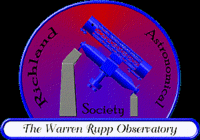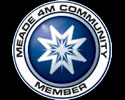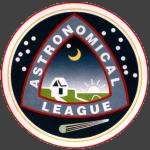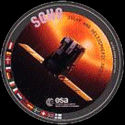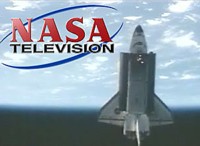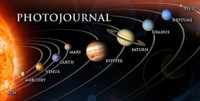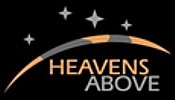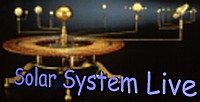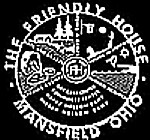December 2008

Previous Editions of the M111:
M111 Fall 07
M111 Late Fall 07
M111 Dec 2007
M111 Jan 2008
M111 April 2008
June/July 2008
August 2008
September 2008
October 2008
Greetings...
Welcome all ye weary travelers to a new type of M111... "On Line"! Thanks to the magic of the internet, it's now easier than ever to keep up a new newletter each month. The only thing that isn't easy is getting new content! Any time you have something you'd like to offer - be it a story of how you first got started in astronomy, a star party you just attended, a telescope you just bought, or your favorite constellation, just drop me a line with the story included and I'll be sure to get it posted!
In the meantime, I do my best to make sure everyone is aware of our newsletter. If for some reason you need a hardcopy and cannot print one yourself, please feel free to contact me at 419-845-2629 and I will be happy to send you one via regular postal mail. As always, if you have something to contribute? Let me know!
Back to top...
Words From Da' Prez
 Season Greetings, Fellow RAS Members!
Season Greetings, Fellow RAS Members!
First and foremost, I'd like to thank everyone who took the time to
vote on this year's board and officer elections both in person and by
proxy. Expressing your opinions is a vital and important part of the
health of any organization and we look forward to a peaceful and
progressive new year! The results of the votes are finalized and
here's the results: Bruce Scodova - Board & Observatory Directory,
Dan Everly - Board & Chairman of the Board, Keith Moore - Board &
Treasurer, Dave Morhbacher - Board and Secretary, Tammy Plotner -
Board & President, Terry McQuistion - Board & Vice President, Robert
Payne - Board, John Neumann - Assistant Observatory Director and Kim
Balliet - Public Outreach Director. Please do not forget that some of
our most valued and trusted advice comes from those who have walked
down the road before us, and you may always look to Dave Hartsel, John
Boggs, Joe Forster and Mike Allen for council and advice on any
matter. They remain an integral part of who we are... So seek them
out!
We'd also like to take the time to thank Dave Hartsel, Keith Moore,
Dave Mohrbacher and Mike Allen for finalizing and legalizing the very
last details on our new club by-laws! During our December board
meeting these were finalized and signed. When the copies are scanned,
they will become a part of public record and be available to all club
members and anyone interested - and will be posted on our website
under the appropriate tab. (I will provide a clue url as to where
they can be located when I get the copies. The holiday has me swamped
right now!)
For those of you interested, we also have an official WRO 2009
Calendar! I've done it in a printable pdf format so you can do a page
at a time if you like and it gives me the option of adding notes in
the future for events we might not have covered just yet. Be sure to
take advantage of several "Member Observing Nights"! These are
pre-approved times with no public programs... Just good, old
fashioned observing with no bells, whistles, lights or crowds. Time
to break out the telescope and hope for clear skies! Just in case I
don't get time to update the website today, I've attached a copy of
the calendar. (good grief, charlie brown.... where does the time
go??) This will eventually get posted on our website in case you lose
it or need another copy. ;)
Also, it's time to update our master roster. In order to preserve
club privacy, I do NOT post the club roster under a public url on our
website - but I will list it under a private url where you can access
it in the future once it is updated. For now, I have attached a copy
and I need for you to verify if your information is correct. This is
important for many reasons! #1 - This is the only way that I have of
getting in contact with you. #2 - This is the only way you get the
"Reflector" magazine at the correct address. Please keep in mind that
if you have not paid your club dues for 2009 that you will need to do
so by February to remain active. Your club dues keep you in as a
member of the Astronomical League, the Richland Astronomical Society,
Friendly House Member and the remainder goes to help pay for the
electricity and insurance we need to operate each year. If you have
any questions about whether or not you owe anything or where to send
it, please feel free to contact Keith.
Our next RAS meeting will be on January 3 at Bob Evans located at
Interstate Circle at the junction of 71 and SR 13 at around 7:00 pm.
It's a great time to go out to dinner! But, don't forget... The best
laid plans of mice and men often go astray, so the weather could play
a very, very important role in this meeting. The rule of thumb is, if
weather conditions are not good in your area at 5:00 pm, please check
your email or phone messages for a cancellation. As much as we'd love
to meet, it's no fun driving on ice or snow - and it's not worth
taking chances. However! If driving is good? Hey! We look forward
to seeing everyone!! It's time to discuss a very, very special visit
we have coming at the end of January, do an introduction on
Astronomical League Observing Clubs, begin discussing Hidden Hollow
planning and taking volunteers and setting some goals towards IYA
2009!
For now? Stay warm and have a happy, happy holiday!
~Tammy
Back to top...
The Christmas Star - Fact or Fiction?
 'Tis the season… And every year around this time people notice the brilliant 'star' to the west just after sunset. For astronomers, we know it's the appearance of the planet Venus, but noticing it for the average person brings on questions about the holidays. Was the Christmas Star real?
'Tis the season… And every year around this time people notice the brilliant 'star' to the west just after sunset. For astronomers, we know it's the appearance of the planet Venus, but noticing it for the average person brings on questions about the holidays. Was the Christmas Star real?
Regardless of your faith, the story of the 'Star of Bethlehem' is one of the most powerful and enigmatic symbols of Christianity. For centuries, scientists, scholars and historians have debated about the nature of this biblical light that heralded an event. Was it purely a divine sign, created miraculously to mark a special birth? Or was it an astronomical event in its own right?
David Reneke, news editor of Australia's Sky and Space Magazine, believes astronomers may have found the answer - or at least something that fits all the known facts - basing his research on the highly esteemed gospel according to Matthew, the first of the four gospels in the New Testament. It would appear to be the first written and this version places key players together in the same time period. "It's generally accepted by most researchers that Christ was born between 3 BC and 1 AD." says Dave. With the aid of modern astronomy software programs astronomers can reproduce the night sky exactly as it was, thousands of years ago. Humans are curious and so was Dave, so he turned back the hands of time and the stars to the time of that long ago Christmas…
"We found out something startling." said Reneke, "It looks like the 'Christmas star' really did exist,"
Two thousand years ago, astronomy and astrology were considered one and the same. The motions of the heavenly bodies were used to determine the events of history, and the fate of people's lives. Of the various groups of priests and prophets of this period, those which commanded the most respect were the Magi - whose origins are not entirely clear. Known as 'wise men' , we can only assume they were actually priests who relied on their knowledge of astronomy/astrology.
Armed with an approximate date, Dave assumed the 'Star of Bethlehem' was not just a localized event and could be observed by sky-watchers elsewhere in the world, not just by the Magi. Historical records and modern-day computer simulations indicate a rare series of planetary groupings, also known as conjunctions, during the years 3 BC and 2 BC In fact, this was one of the most remarkable periods in terms of celestial events in the last 3,000 years!
"Like the final pieces of a difficult jig-saw puzzle, our fabled biblical beacon is starting to reveal itself," David said. "On 12 August, 3 BC, Jupiter and Venus appeared very close together just before sunrise, appearing as bright morning 'stars.' It would have been visible in the eastern dawn sky of the Middle East from about 3:45 to 5:20 a.m."
But it didn't stop there. The crowning touch came ten months later, on 17 June 2 BC, as Venus and Jupiter joined up again in the constellation Leo. This time the two planets were so close that, without the use of our modern optical aids, they would have looked like one single, brilliant star. According to Dave's research, Jupiter was known as the "planet of Kings" and Saturn as the "Protector of the Jews". This could easily have been interpreted as a sign that the Jewish Messiah had been, or was about to be, born. Also, Leo was thought to denote royalty and power. An interpretation? Perhaps. But, do not forget the times in which this occurred. Astronomy and astrology intermingled. This whole sequence of events could have been enough for at least three astrologers to see this as sign in the heavens and make their way Jerusalem.
"Now, this doesn't mean that astrology works," Reneke said. "We haven't ruled out other possibilities for the Star of Bethlehem but it does make our search more rewarding to find a truly interesting astronomical event that happened during the most likely time for the Nativity."
Whatever the Star of Bethlehem was, it has had more impact on humankind than any star before or since. It is also possible that the mystery of the Star will never be completely solved. For many of us though, it is the mystery itself that drives us to find the solution.
David Reneke, one of Australia’s most well known and respected amateur astronomers and lecturers, has over 40 years experience in astronomy with links to some of the world’s leading astronomical institutions. David is also the News Editor for Australia’s Sky and Space Magazine, he teaches astronomy at college level, is an invited speaker at astronomy conventions throughout Australia, a feature writer for major Australian newspapers, and is a science correspondent for ABC and commercial radio stations. In these weekly radio interviews David regularly appears on about 60 networked stations around the nation with all the latest news and on general astronomy and space discovery issues. Look for his story about the "Christmas Star" to air locally on Good Morning, America. Our thanks to Dave for sharing with us!
Back to top...
Superstar Hide and Seek
 It sounds like an impossible task: Take a star a hundred times larger in diameter and millions of times more luminous than the Sun and hide it in our own galaxy where the most powerful optical telescopes on Earth cannot find it. The “Peony Nebula” star is the second-brightest found in the Milky Way Galaxy, after Eta Carina. The Peony star blazes with the light of 3.2 million suns.
It sounds like an impossible task: Take a star a hundred times larger in diameter and millions of times more luminous than the Sun and hide it in our own galaxy where the most powerful optical telescopes on Earth cannot find it. The “Peony Nebula” star is the second-brightest found in the Milky Way Galaxy, after Eta Carina. The Peony star blazes with the light of 3.2 million suns.
But it is not impossible. In fact, there could be dozens to hundreds of such stars hiding in the Milky Way right now. Furiously burning their inner stores of hydrogen, these hidden superstars are like ticking bombs poised to ‘go supernova’ at any moment, possibly unleashing powerful gamma-ray bursts. No wonder astronomers are hunting for them.
Earlier this year, they found one.
“It’s called the Peony nebula star,” says Lidia Oskinova of Potsdam University in Germany. “It shines like 3.2 million suns and weighs in at about 90 solar masses.”
The star lies behind a dense veil of dust near the center of the Milky Way galaxy. Starlight traveling through the dust is attenuated so much that the Peony star, at first glance, looks rather dim and ordinary. Oskinova’s team set the record straight using NASA’s Spitzer Space Telescope. Clouds of dust can hide a star from visible-light telescopes, but Spitzer is an infrared telescope able to penetrate the dusty gloom.
“Using data from Spitzer, along with infrared observations from the ESO’s New Technology Telescope in Chile, we calculated the Peony star’s true luminosity,” she explains. “In the Milky Way galaxy, it is second only to another known superstar, Eta Carina, which shines like 4.7 million suns.”
Oskinova believes this is just the tip of the iceberg. Theoretical models of star formation suggest that one Peony-type star is born in our galaxy every 10,000 years. Given that the lifetime of such a star is about one million years, there should be 100 of them in the Milky Way at any given moment.
Could that be a hundred deadly gamma-ray bursts waiting to happen? Oskinova is not worried.
“There’s no threat to Earth,” she believes. “Gamma-ray bursts produce tightly focused jets of radiation and we would be extremely unlucky to be in the way of one. Furthermore, there don’t appear to be any supermassive stars within a thousand light years of our planet.”
Nevertheless, the hunt continues. Mapping and studying supermassive stars will help researchers understand the inner workings of extreme star formation and, moreover, identify stars on the brink of supernova. One day, astronomers monitoring a Peony-type star could witness with their own eyes one of the biggest explosions since the Big Bang itself.
Now that might be hard to hide.
Find out the latest news on discoveries using the Spitzer at www.spitzer.caltech.edu. Kids (of all ages) can read about “Lucy’s Planet Hunt” using the Spitzer Space Telescope at spaceplace.nasa.gov/en/kids/spitzer/lucy.
This article was written by Dr. Tony Phillips and was provided by the Jet Propulsion Laboratory, California Institute of Technology, under a contract with the National Aeronautics and Space Administration.
Back to top...
Welcome To Our New Member
 We'd like to welcome our newest member - Jeffrey Coe! If you're thinking about joining, come on in! Right now, your $40 membership gets you in for the 2009 year and this means membership to the Astronomical League, the Richland Astronomical Society and Friendly House... the rest goes to covering our electricity and insurance. Our on-line application for membership is now currently updated and running smoothly! In the meantime, if you prefer to print off regular registration and bring it with your dues to our regular monthly meetings. If you can't find what you're looking for, please feel free to email me!
We'd like to welcome our newest member - Jeffrey Coe! If you're thinking about joining, come on in! Right now, your $40 membership gets you in for the 2009 year and this means membership to the Astronomical League, the Richland Astronomical Society and Friendly House... the rest goes to covering our electricity and insurance. Our on-line application for membership is now currently updated and running smoothly! In the meantime, if you prefer to print off regular registration and bring it with your dues to our regular monthly meetings. If you can't find what you're looking for, please feel free to email me!
OPT Rewards
 Are you hankering after a new telescope? Do you have an eyepiece you've always wanted? Got your eye on an astronomy book? Don't shop around... Shop at OPT!
Are you hankering after a new telescope? Do you have an eyepiece you've always wanted? Got your eye on an astronomy book? Don't shop around... Shop at OPT!
Oceanside Photo and Telescope is more than just one of our Hidden Hollow sponsors - they are also a source of our club rewards program. Not only is OPT one of the country's largest and most reputable telescope dealers, but they're also offering a great discount to WRO members! Take a look around on the website. When you find something you want to order and go to check out, simply put "Warren Rupp Observatory" into the club affiliation box and... poof! You automatically get a discount. There's only one thing. The discount doesn't show until you get your final bill. How much? It could be just a few dollars and it can be as much as 20%! Now that's using a real rewards program!
For everyone, I now have a real OPT Rewards Card for you! I'll bring them to our January meeting and to all subsequent meetings until you get one!
Back to top...
Winter Observing....
 By this time of year, things are really beginning to freeze over, so use caution when requesting Observatory time. Don't forget the dome controls can freeze and the drive up the hill can be treacherous when road conditions are icy and snowing!
Back to top...
By this time of year, things are really beginning to freeze over, so use caution when requesting Observatory time. Don't forget the dome controls can freeze and the drive up the hill can be treacherous when road conditions are icy and snowing!
Back to top...

